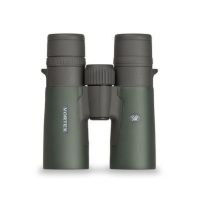
In a classic bait-and-switch move, I’m going to tell you something anticlimactic: You should start winter scouting public land just like you would any deer ground. Walk it, make notes, check out the past season’s sign, and try to read the terrain so that you’ll be better prepared next fall.
This is all simple stuff and worthwhile for the public land hunter. But there’s more to the story if you want to use your February findings to stay on top of in-season deer movement. In this case, you’ve got to first acknowledge an inevitability of public land hunting—inconsistency in deer patterns.
This is the exact opposite of much of the whitetail advice out there, which not only hinges on consistency, but actively encourages hunters to do whatever they can to guarantee it.
From food plots and bait sites to a lot of popular habitat improvement strategies, the idea is often to create an area that not only holds deer, but strongly encourages them to revisit it every day, and every year. Hunters appreciate this because it makes things much more predictable, which, not coincidentally, makes things easier. There’s nothing wrong with any of improving land, but this modern whitetail mentality tends to bleed into all aspects of deer hunting, even when it might not be directly applicable to your situation.
If you’re a public land hunter, you can’t rely on altering the landscape to ensure consistent deer usage. You need to hunt them where they are and how they behave.
The Big Deer Picture A few years ago I had a conversation with Alex Gyllstrom, a Wired to Hunt contributor who also works for Whitetail Properties. One of the things Alex said during our chat that stuck with me was, “A real understanding of deer ground is what kills bucks.”
This might seem surface level, but it’s not.
When you’re talking about public land deer that might pinball their way around their home range in response to hunting pressure, having a good idea where they might end up at any given time is huge. This is the real key to winter scouting on dirt that anyone can hunt.
If you know that the deer should be in a specific spot, but instead you find a few new hang-ons and some freshly installed cameras when you slip in during the middle of October, it’s time to adapt. There will be other spots that the hunters are ignoring, which is also where the bucks could be.
It’s not always easy. But finding those areas does become a simpler proposition if you’re intimately familiar with the ground. That’s one of the reasons I try to put on as many miles as possible in February and March. Sure, I love finding sheds and concentrations of deer sign, but I also just want to understand the playing field on which I’ll be hunting.
Every creek crossing, every oak flat, every clear cut, everything matters. That knowledge is what helps guide in-the-moment decisions when the bucks aren’t doing what you expect of them because your competition has invaded last year’s honey holes.
This is the biggest and most important step in winter scouting public land. Learn it well, learn it extensively, and then start going a bit more granular.
Where Two Worlds Meet If you’ve racked up several 20,000-step days in your public land winter scouting, you’re doing well. Now it’s time to fine-tune your search to blend in a public land mindset with the same things that private-land scouters key on.
The rublines, scrapes, pounded trails, and all deer sign still visible from last year is there for the taking. It’s there for you to find and plug into your big-picture understanding of deer usage on that ground. Instead of calling it good enough when you run across a hillside bench that is littered with rubs, ask yourself why he was there and whether he’ll be back?
Was he staging there or bedding? Is his usage of that bench a response to hunting pressure on the ridge top above and the valley below? Last year’s buck sign allows you to speculate on why it is where it is and it allows you to file that away for this year. It provides a great starting point and can be all you need to fill your tag this season.
It also might not. This sign could get you close but might still require some extra in-season scouting or maybe an on-stand observation to lead you to current deer movement. This is important to understand because it’s crucial to the process. You can winter scout your heart out and think you’ve got everything dialed, but the hunting competition and the whims of prey animals often conspire to produce unexpected activity in the woods. Usually, an unexpected and unwelcome lack of activity, actually.
To keep that to a minimum, you must have a good idea of where to go next when one spot has cooled off-especially if it never heated up in the first place. A great way to accomplish this is by really learning every inch of your deer ground throughout the winter, which is an opportunity every public land hunter has right now.
Feature image via Captured Creative.







